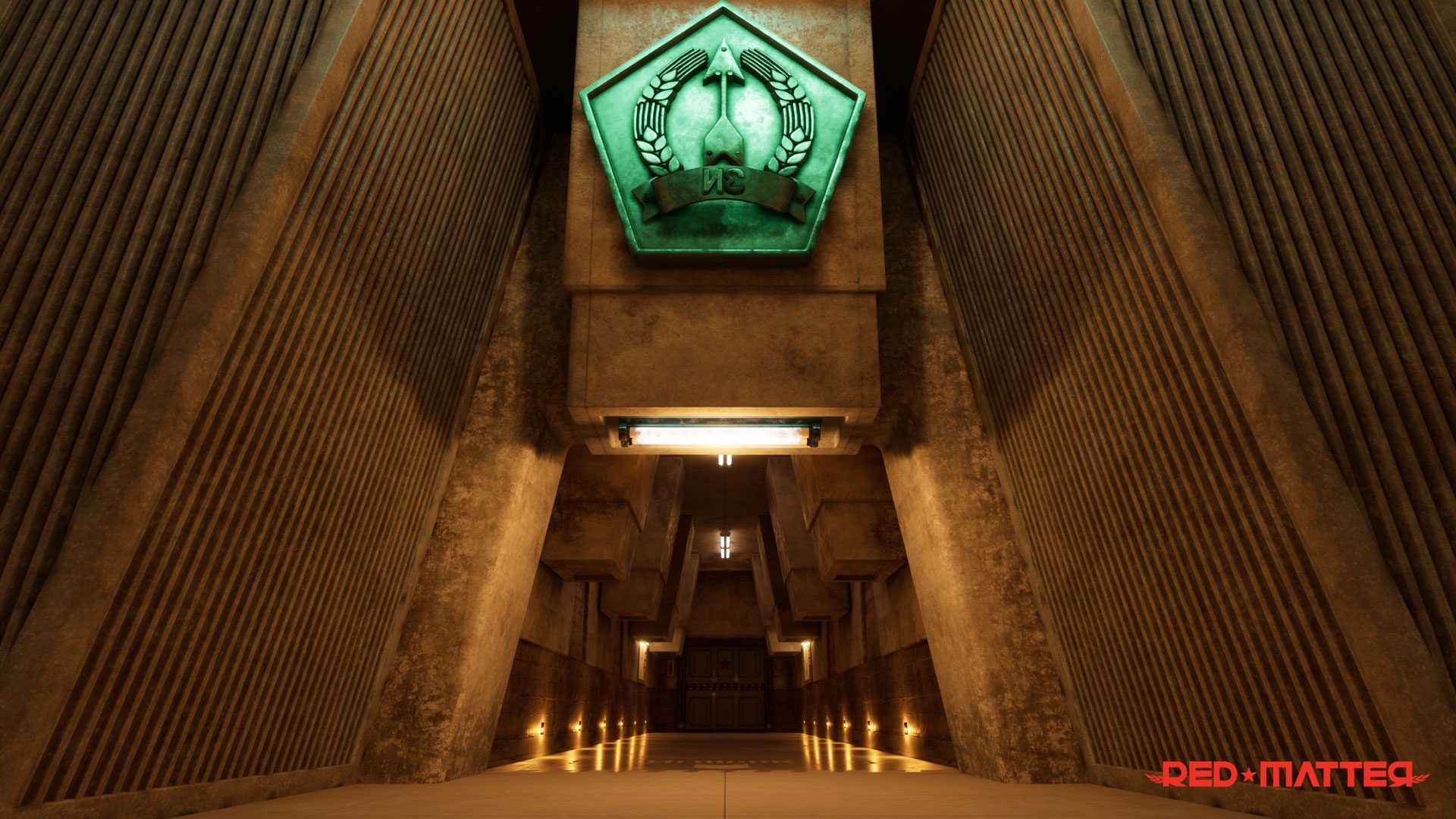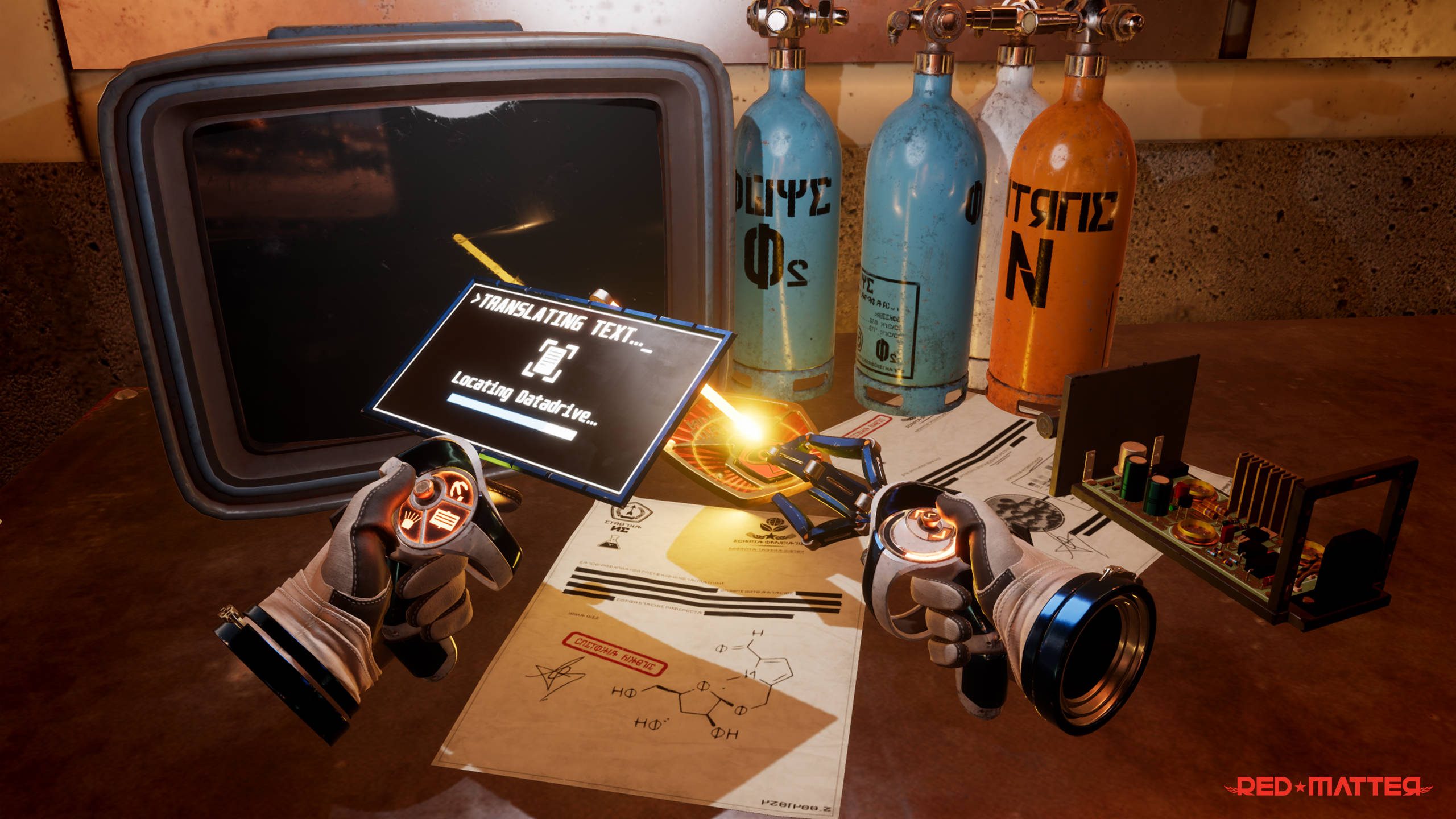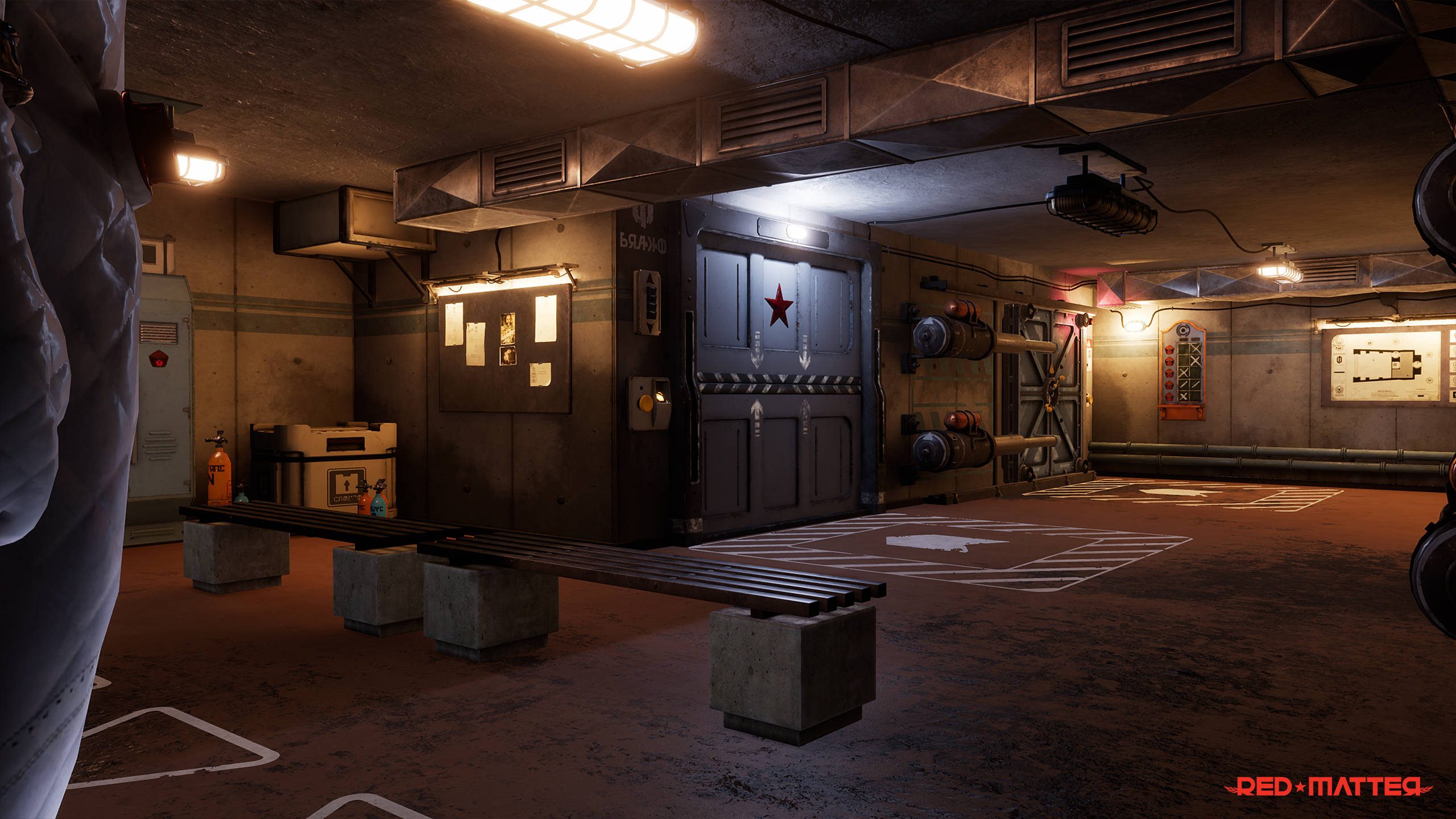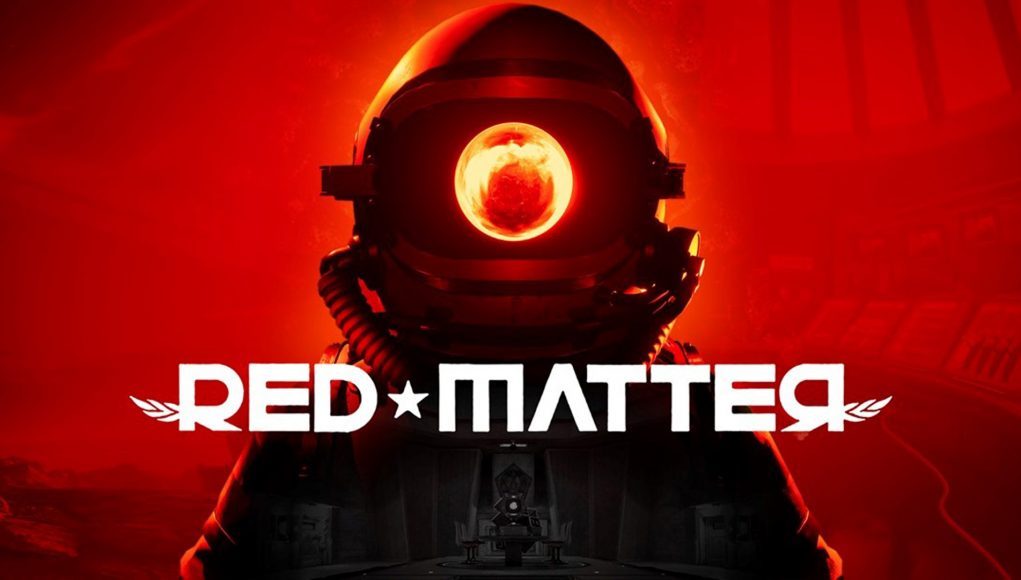Red Matter is a first-person puzzle adventure set in a strange and mysterious alternate universe, which takes old Cold War rivalries and teases them out to an interesting logical conclusion: space bases, astronaut espionage and a healthy dose of intrigue as you, a member of the Atlantic Union, infiltrate the off-planet test facility of the Soviet-sounding Volgravians. Exclusive to Oculus Rift, Red Matter showcases some impressive worldbuilding, a knack for polish, and an engaging enough story to make this a single sitting game.
Red Matter Details:
Developer: Vertical Robot
Available On: Oculus Store (Rift)
Release Date: May 24th, 2018
Gameplay
Like most adventure games, Red Matter’s emphasis is on telling its story through found items such as notes, diaries, photos, and a host of everyday objects. It just so happens that when you crash-land on the Volgravian base on Rhea, a moon of Saturn, that two-way communication is disrupted—but you still have your handy Volgravian-to-English translating module, making it a constant exercise in deciphering the faux-Russian script.
As a silent protagonist, much of the direction of the story is voiced through your commander, who is pipped in to your space suit for a majority of the game. I’m not a fan of the ‘helpful robot’ trope in VR adventures because they tend to get annoying after a while, and I’ll admit the commander got on my nerves a little. I would have liked the option to contact him on demand, rather than being force-fed suggestions on what to find, and do next. In the end, he did die down somewhat as the density of puzzles and items important to the narrative started filling in the gaps in the game’s third act. I won’t go any further story-wise for fear of spoiling it, but Red Matter is a typical sci-fi thriller, so definitely expect some twists and turns along the way that make you reassess what on the outside seems like a straightforward mission.
The game’s numerous and varied puzzles begin once you enter the Volgravian facility, a testing grounds taken over by a mysterious red substance that can be found marked on walls, doors and objects everywhere. You explore the full facility from top to bottom, and rarely need to return to previously explored areas on your mostly one-way trip through the imposing, brutalist concrete base.

My objective isn’t to investigate the substance though, it’s simply to infiltrate and transmit some secret documents back to home base; that’s where the intrigue begins, as I learn about each of the facility’s workers, their relationships, and the struggle for power that isn’t immediately apparent upon walking into what appears to be an ordered, but abandoned base.

Puzzles range from simply finding a code scrawled on a piece of paper, to matching a series of symbols to activate a laser array, or turn a network of levers to restart a power station. I didn’t find any of these especially difficult, and moved through at a normal playing pace with only a few hiccups along the way. I got hung up on two puzzles—excluding the most difficult puzzle near the end—because I actually overestimated the difficulty, and found out after taking a short break that they were actually extremely simple all along (eg. following instructions on a screen, translating them, and flipping the right levers).
Puzzles provide interesting, although fairly quick stops, along the way through the game’s story, which I found engaging enough for me to carry on in a single sitting – clocking in just over three hours of gameplay. Vertical Robot says a typical playthrough should last between three and a half to four hours. Paying attention to the found items is pretty important, as I’m not sure I would have gotten the full context without them as the drama crescendos. I did find myself scratching my head a bit near the end, as the pace picks up substantially and it teeters precariously into ‘B movie’ level of sci-fi dramatic twists and turns, which diminishes the narrative’s gravitas somewhat.

The level of worldbuilding is expansive enough to leave me wanting more. As an outsider, very few things refer to you as the player, and while I can see it as an inherent drawback to playing as a character that’s essentially a blank slate, eventually you do find yourself at the center of the story—something I wish could have lasted longer so I could internalize more of the drama.
Immersion
Visually, Red Matter is a stunning showcase of the team’s expertise in Unreal Engine. Textures are extremely high quality, and the game’s architecture is nothing short of awe-inspiring. I didn’t have any issues running the game, although my test rig has a Core i7-6700K, 16 GB of RAM and a GTX 1080. I would suspect most VR-ready computers are able to handle it though, as you can turn off both dynamic and indirect shadows in the settings, and adjust shader quality via a slider.

Object interaction is really satisfying too. Levers feel weighty, and sometimes require two hands to manipulate, giving you the feeling that you’re actually moving something. Move your hands too quickly, and you’ll lose grip of the lever, which really infiltrates the part of my brain that says “this is real. I better not fuck it up.” There’s no inventory to speak of either, only the digital scanner, that besides its main use as a translator, can also copy key data and other important modules, so there’s no faffing about with storage.
Hand presence is basically nill, although this is because you’re given two hand-controlled grabber claws to pick up and manipulate objects—something I found to be really well done. Watching your tools extract and retract is an appreciated touch, although at I times I forgot which way to toggle my left controller’s stick
Locomotion options are fairly plentiful. At first the game showcased a number of teleportation options, including an on-rails point-to-point navigation scheme that uses your boosters. Vertical Robot has since introduced smooth locomotion since we last went hands-on in our ’16 Minutes of Gameplay’ preview article. Smooth locomotion plays second fiddle to teleportation though, as it’s quite slow, forward-only, and is mapped to the left controller’s grip button while teleportation is mapped to the right controller’s stick. Some parts of the game require teleportation or on-rails boosting, so there’s no getting away from the fact that it was designed for those locomotion schemes first. Lastly, there is no smooth turning option, only snap-turning.
Red Matter definitely left me experiencing brief moments of that ineffable feeling of Presence (with a capital ‘P’), and ranks among the best VR environments I’ve seen since Lone Echo (2017). Some players may find the lack of complete ‘free’ locomotion a turn-off when it comes to immersion however. I found on-rails boosting to be the best of both worlds really, using it for the majority of my session.
Comfort
Since there’s a number of locomotion options available, including blink teleportation with snap-turning (aka ‘VR comfort mode’), Red Matter ranks among the most comfortable VR experiences you can have with artificial locomotion. Using the on-rails booster is mostly a comfortable experience too, which the game uses as the default way of traversing the facility.
Red Matter also includes a seated mode, which adjusts your in-game height so you can more comfortably interact with and move through the game while in chair. I played most of the game seated, and only found a few moments when things were slightly out of reach, making me move my chair back from my desk so I didn’t accidentally smack something over.







